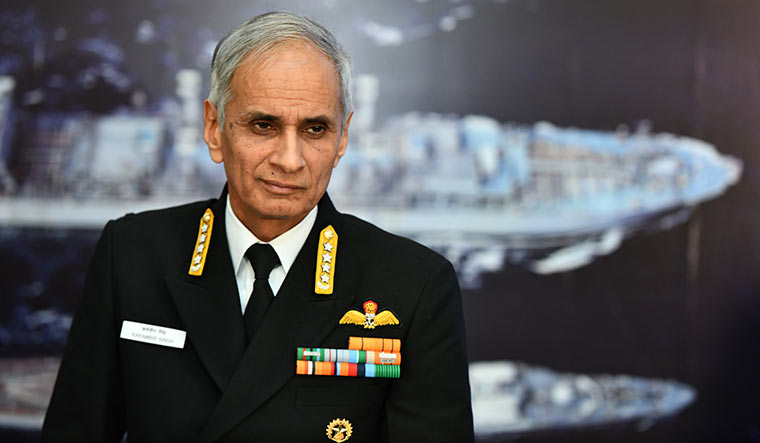In May 2019, when Admiral Karambir Singh took over as the chief of Indian Navy, his priority was to expedite the long-delayed modernisation of the force, including induction of new warships, submarines and aircraft.
During the two and half years in office, Admiral Karambir, who is retiring on Tuesday, has also had a very dedicated focus in engaging with India's maritime neighbours with maximum maritime exercises.
As India looks to counter growing Chinese influence, it also focuses on its naval power. The navy has 130 ships and submarines while 39 more are under construction. During the tenure of Admiral Karambir, focus of the navy was on acquisition of capability to protect the country's interests in the maritime domain. He expedited the ongoing acquisition programmes. Induction of the fourth Scorpene class submarine and sailing of indigenous aircraft carrier Vikrant are considered some of the biggest achievements of the navy in the recent past.
India has negotiated agreements with several countries in the littoral IOR to obtain military access to their bases in the last two years. In order to enhance capability and ensure sustenance, India has concluded Mutual Logistics Support Agreement (MLSA) with Australia in June 2020 and Reciprocal Provisions for Support and Services (RPSS) with Japan in September 2020.
India's maritime engagements, including with smaller navies, have increased with several bilateral and multilateral exercises. While Australia was included in the Exercise Malabar, trilateral naval war-games happened with Singapore and Thailand. Moreover, for the first time, Indian and Algerian navies conducted naval exercise off the coast of Algeria in August, 2021. The naval exercise with Algeria was crucial for India as it is strategically located in the Maghreb region (region of North Africa bordering the Mediterranean Sea) and is the largest country of Africa.
In a sign of its growing global outreach, the Indian Navy is associating with 21 countries and 22 multinational agencies for quick sharing of information related to maritime activities in the Indian Ocean region. Latest was Oman, which became the 22nd country to sign a White Shipping Agreement with India in September.
At any given time, the Indian Navy monitors close to 12,000 ships and 300 fishing vessels in the Indian Ocean Region. Apart from that, there are close to 3 lakh Indian fishing vessels operating in the seas and their activities, too, are observed by the force.
The Indian Ocean Region accounts for 75 per cent of the world's maritime trade and 50 per cent of global consumption passes through it prompting security measures involving multiple countries.
Extending its long legs, the Indian Navy in the past two years has invested significant effort in meeting all regional commitments and furthering India's diplomatic engagements with friends and partners in the Indo-Pacific.
With missions like Operation ‘Samudra Setu’ and ‘Mission Sagar’, the navy was a key instrument of India’s COVID outreach, delivering assistance and support to our maritime neighbours and partners in the Indian Ocean Region. The prompt and effective deployment in the time of crisis, has underscored India’s vision of being the ‘Preferred Security Partner’ and ‘First Responder’ in the region.
During the pandemic, around 4,000 Indian nationals were evacuated from Iran, Maldives and Sri Lanka through operation 'Samudra Setu'.
The navy under Admiral Karambir undertook missions to provide humanitarian assistance to five IOR littoral nations, four East African nations and two South East Asian nations. From carrying out naval drills with like-minded countries to reaching out to states in the Indian Ocean Region, the Indian Navy is focusing on checking China’s rising ambitions in the region.





